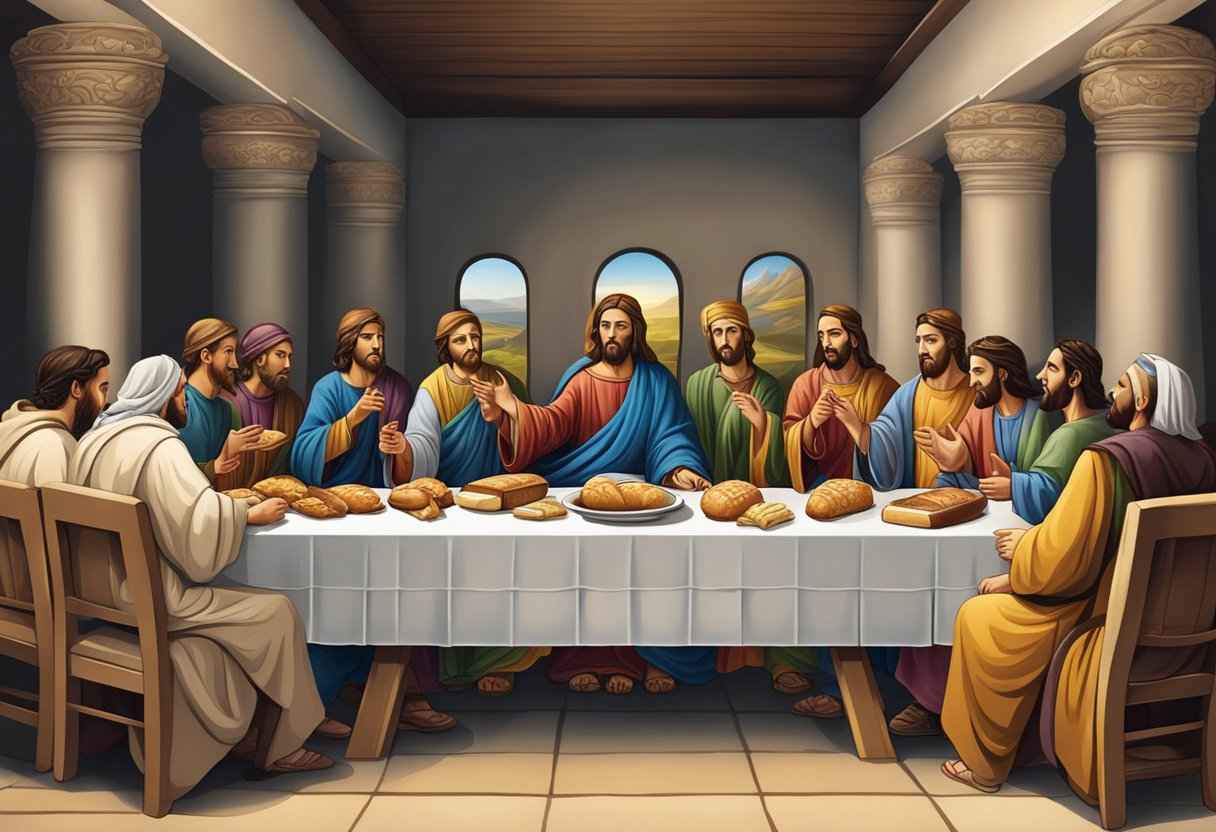The high places were raised natural or man-made locations in ancient Israel and Judah that were sites of pagan worship and sacrifice. They were typically built on hilltops or elevated ground, giving them both physical and spiritual prominence in the landscape.
God and the Biblical authors strongly condemned the high places for their association with idolatry. Despite periodic efforts by several Israelite kings to destroy these shrines, the high places endured for centuries as illicit centers of syncretistic religion that challenged devotion to Yahweh alone.
The Origins and Nature of the High Places
The establishment of high places as cultic sites predated Israel’s monarchy. During Israel’s conquest of Canaan, the indigenous non-Israelite peoples had already erected high places to worship their own gods and goddesses. These included deities like Baal, Asherah, Astarte and others venerated across the ancient Near East.
Structures at the high place centers ranged from small open-air altars and standing stones to more elaborate compounds with sacrificial pits, priests’ quarters, pole-statues of deities (‘Asherim’) and altar hearths for cooking and eating sacrificial meat. The sounds of music, singing and ecstatic prophesying before assembled crowds would have echoed from these hilltops as stench from burnt offerings filled the air.
Early High Place Worship in Israel
In Israel’s pre-monarchic era, high places served as local worship sites for the tribal confederacy. The Bible does not explicitly condemn early high place veneration. As a decentralized society with no centralized political or religious authority, it was common for leaders and lay families to make offerings at rural high place altars honoring Yahweh, the God of Israel (1 Samuel 9:12-14).
However, lacking the central sanctuary later established in Jerusalem, it was easier for Israelites to blend Yahwistic faith with residual Canaanite practices associated with the high places. These included using idol representations of Yahweh, syncretizing Yahweh with pagan gods in worship, and failing to enforce sacrificial rules from the Torah. As a result, high place religion tended to undermine monotheistic obedience to Yahweh.
Also read: Where is Havilah in the Bible? Uncovering the Mystery
Royal Ambivalence Towards High Places
Later under the Israelite monarchy, centralized worship in Jerusalem could not totally supplant continuing veneration at outlying high places. With political stability and economic prosperity under kings like Solomon, high places actually proliferated across the landscape, with hundreds in operation (1 Kings 3:2). For both northern Israel and southern Judah, most kings patronized high places even while promoting authorized worship in Jerusalem.
Some monarchs did prioritize high place removal, including Asa (2 Chronicles 14:2-5), Hezekiah (2 Kings 18:1-8), and Josiah (2 Kings 23:4-20). But their successors often reversed course and revived high place religious activity.
Denunciations of High Places Worship
Starting in the 8th century BC, Biblical prophets began openly condemning northern Israel’s calf idols and Judah’s policy of multifaith toleration towards various gods. Within this prophetic critique, the idolatrous high places emerged as a key target. The prophets recognized that syncretism and religious decentralization centered around high places was eroding foundational obedience, ethics and justice across society.
Speaking for Yahweh, Hosea berated the northern kingdom as the “people who sacrifice on the tops of the mountains” (Hosea 4:13). Isaiah mocked Judah’s reliance on hilltop tree cults, asking sarcastically if they had ever commanded Yahweh’s attention (Isaiah 57:7). Jeremiah claimed the many high places had become as abhorrent to Yahweh as Topheth child sacrifices (Jeremiah 7:30-32).
These prophetic broadsides highlighted the deep theological and ethical concerns posed by ongoing high place activity. More than just cult sites, they had become embodiments of wayward religion and misplaced trust that rejected Yahweh’s kingship. Their continuing operation represented failed spiritual leadership and invited divine punishment.
The Eventual Decline of High Place Worship
In the late 7th century BC, the rising Neo-Assyrian empire conquered and destroyed the northern kingdom of Israel, scattering its inhabitants and bringing an end to its unorthodox calf cult. This geopolitical disaster summoned intense theological reflection for the surviving kingdom of Judah. Understanding their national survival as dependent wholly upon faithfulness to Yahweh, King Josiah and his priests pursued sweeping religious reforms that included finally dismantling Judah’s high places.
Though addressed periodically under later kings, rogue high place worship persisted even after Judah’s exile to Babylon in the early 6th century BC. But with the loss of land and temple and the rise of Babylonian & Persian control, the sociocultural infrastructure supporting hilltop shrines dissolved. By the Second Temple period, as Judean religion consolidated under the Jerusalem priesthood and Torah, high place religion faded from prominence.
High Places as Symbols of Spiritual Waywardness
While no longer physically operating, the “high places” endured in Jewish thought as emblematic of Israel’s chronic failures to remain spiritually devoted to God alone. Beyond just being images of idolatry or sacred shrines, the high places came to epitomize the powerful temptation towards religious syncretism and spiritual harlotry that had characterized much of Israel and Judah’s wayward history with Yahweh.
This symbolic resonance carried over into the New Testament. In his apocalyptic visions, John warned Christian churches tempted towards spiritual immorality and idolatry that risked judgment. Significantly, he described this as eating food and participating in sexual immorality at the conceptual high places, borrowing from prophetic metaphor (Revelation 2:14, 20).
For ancient Israelites, early Christians and moderns, our human tendency to compromise our religious convictions and absolutes remains an ever-present challenge. One may argue that the peer pressure to blend sociocultural values with Biblical faith produces ideological high places in every generation. Heeding prophetic warnings against their subtle dangers remains essential. Like Hosea proclaimed over Israel, adherence to Yahweh alone, no matter how countercultural, promises true knowledge of God (Hosea 6:1-6).
Aslo Read: How Many Times is “Pride” Mentioned in the Bible?
Modern Parallels to High Places
While the hilltop high places of old have long been abandoned, the human tendency towards religious syncretism and compromise that they represented remains very much alive today. As in ancient Israel, contemporary believers must constantly guard against ideological high places that threaten pure devotion to God.
Cultural Values as Modern High Places
In the information age, the dominant cultural values transmitted across media and the internet arguably constitute the equivalent of conceptual high places vying for our loyalty today. Social media influencers, celebrities, politicos, and pundits peddle an ever-changing array of worldviews embraced by the masses. In this cacophony of ideologies, maintaining spiritual focus requires wisdom and discernment.
On issues like human sexuality, the sanctity of life, gender roles, or philosophies of truth, believers may face immense pressure to uncritically adopt whatever values prevail in the wider culture. The temptation is to amalgamate Biblical convictions with prevailing cultural dogmas into a syncretistic civil religion that promises social relevance, validation and influence. But this risks drifting into an ideological high place Christianity that retains external trappings of faith while gutting the heart of genuine Godly obedience.
Materialism as a High Place
The accumulate-more consumerist mindset pushed by modern advertising and media also constitutes a tempting high place vying for our worship today. Materialism values the endless acquisition of possessions, assets and experiences as life’s highest aim. It is the worldview undergirding entire economic and social systems.
But Jesus directly challenged this view, teaching that over-attachment to material things risks spiritual impoverishment ([Luke 12:13-21]). Elsewhere, Scripture warns against loving money or pursuing dishonest gain, instead commending godliness paired with contentment ([1 Timothy 6:6-10]). Avoiding assimilation into the crowds ritually shopping for meaning in materialism’s temples requires intentionality in this age.
Self-Exaltation as the Ultimate High Place
Behind cultural syncretism and materialism lies the root high place of self-glorification – living for one’s own desires, reputation and sovereignty rather than God’s. Our social media profile pages and selfie collections vividly illustrate this human tendency towards self-exaltation. The desire to be extolled pervades politics, celebrity culture, academia and beyond.
But Jesus subverted this by taking the role of a servant ([Mark 10:42-45]) and commended humility, not hubris ([Luke 14:7-14]). Paul urged early Christians to model Christ by regarding others as more significant than oneself ([Philippians 2:3-4]). Centuries earlier, Yahweh had denounced spiritual leaders enamored with their own prestige over proper leadership ([Ezekiel 34:1-10]).
Guarding against subtle self-idolatry cloaked in respectable guises remains an enduring challenge if we are to avoid modern ideological high places. But Scripture offers trustworthy guidance here.
Tearing Down Our High Places through Renewal of Devotion to Christ
Avoiding the trappings of ideological high places requires proactive centering of our minds, hearts and lives upon Jesus through spiritual practices. Just as kings like Hezekiah and Josiah tore down Israel’s hilltop shrines, we each must actively dethrone the cultural values, materialism and self-worship that threaten wholehearted loyalty to God.
Fixed Conviction Anchored in Christ
Maintaining clear sight of Jesus as ultimate authority and guide amidst competing value systems around us is essential ([Hebrews 12:1-3]). But this vision requires constant spiritual discipline to uphold. Immersing ourselves regularly in Scripture reinforces Christ-centered conviction and equips us to accurately handle God’s word, rather than being tossed about by prevailing cultural winds and whims ([2 Timothy 3:16-17]).
Repentance and Godly Community
Where we become aware of ideological compromise, repentance and change of direction are needed, whether individually or corporately. But we likely require trusted faith community to humbly identify blindspots, provide counsel and keep us accountable. Positive peer pressure towards uncompromised obedience brings freedom ([Hebrews 10:19-25]).
Christ-Centered Cultural Engagement
Rather than cloistering ourselves from culture, Christians must promote countercultural values rooted in Jesus’ Kingdom. But this requires engaging culture from a firm foundation of spiritual renewal in Christ. Standing on conviction girded in godly community, we avoid assimilation even while reaching out sensitively towards a lost world in need of truth.
Knowing Christ More Through Obedience
Experientially knowing the reality of Christ hinges on actually practicing obedience, not just admiring Him. As Yahweh attested through Hosea, Israel’s rehabilitation required voluntarily aligning their lives to His standards ([Hosea 6:1-6]). Likewise, embracing Jesus’ Lordship in lowly humility and finding life by losing it promises revelation of His nature that intellectual knowledge alone cannot provide ([Luke 9:23-24], [Matthew 11:25-30]). Rejecting the temptation of ideological high places opens a pathway into deeper relationship with God Himself.


















